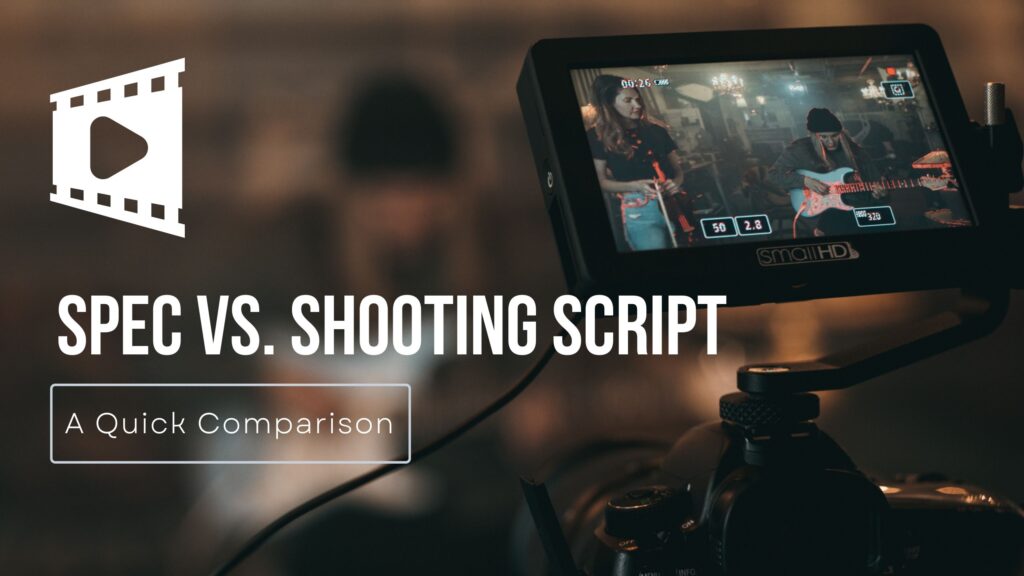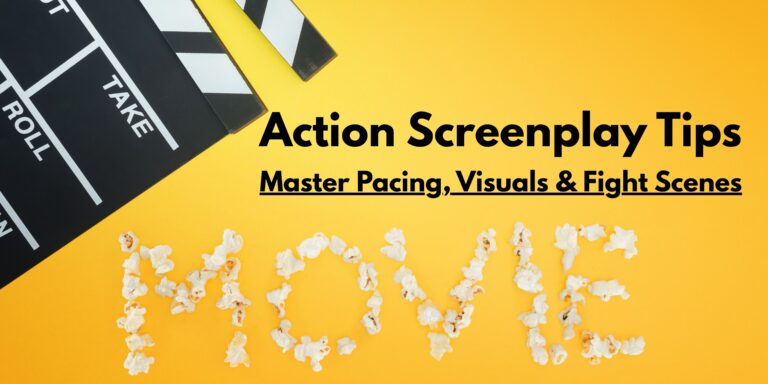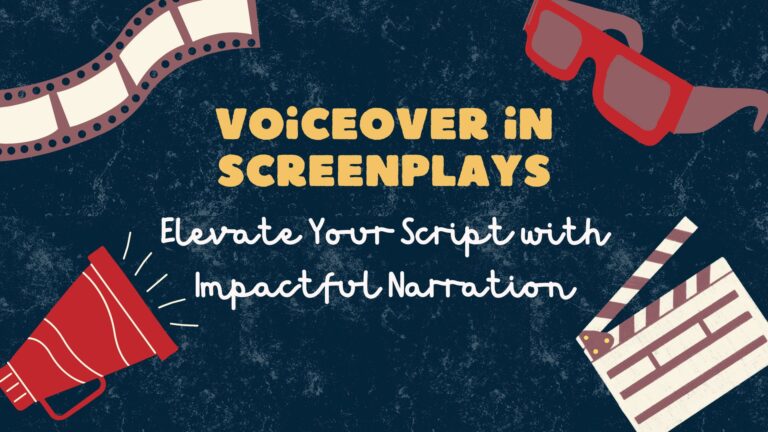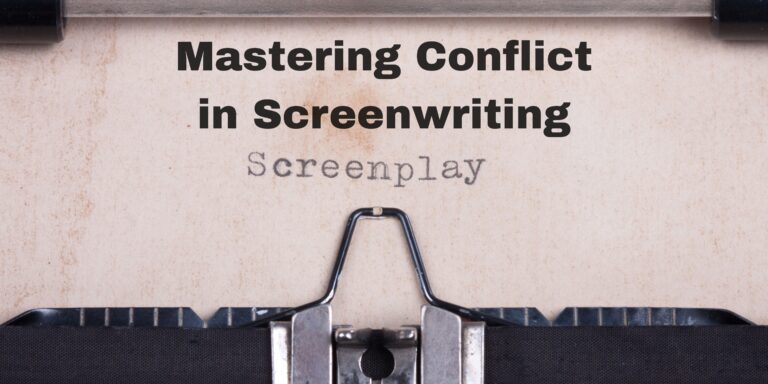Spec Script Success: Powerful Tips to Write One and Stand Out
Ideas are the currency in Hollywood, and a spec script is your golden ticket. It’s the story you bet on before anyone else does, the script you write not for a paycheck, but for possibility.
Envision it as planting a seed in cinematic soil that could grow into the next Good Will Hunting or American Beauty.
Every screenwriter chasing that elusive “big break” knows the feeling: fingers hovering over the keyboard, heart thudding, mind spinning worlds into being, all on speculation.
Writing a spec script is like firing an arrow into the dark and hoping it hits a studio door. But here’s the thing: it’s also where dreams are forged.
Many of the greatest films started as nothing more than an idea and a blank page.
What separates those who make it from those who don’t?
Not just talent, but understanding what a spec script truly is, how it works, and how to wield it like a pro.
So lights on, pages up, writer, we’re cracking open Hollywood’s best secret: the spec script.
Spec Script Explained: The Screenwriter’s Secret to Breaking Into Hollywood
Short for speculative screenplay, a spec script is the writer’s gamble on themselves.
It’s a screenplay written on speculation, meaning no one asked for it and no one’s paying for it (yet).
Instead, writers craft these scripts to showcase their storytelling ability, hoping to sell the work or attract industry attention from producers, agents, or studios.
Read more: Action Screenplay Tips: Master Pacing, Visuals & Fight Scenes
Unlike a shooting script packed with technical cues, scene numbers, and camera directions, a spec script focuses purely on narrative rhythm and emotional resonance.
It’s about storytelling, not cinematography; dialogue, pacing, and character arcs take center stage, while camera angles and edit transitions stay off the page.
In short, it’s not about the filming process, but the overall experience.
Hollywood history is filled with legends born from a spec script.
Take Callie Khouri’s Thelma & Louise, which sold to MGM for $500,000 in 1990 and later won the Academy Award for Best Original Screenplay or Good Will Hunting, penned by two then-unknowns, Matt Damon and Ben Affleck, who sold it for $675,000 and walked away with Oscars.
Alan Ball’s American Beauty also began as a spec script, fetching $250,000 and claiming another golden statuette.
But the tradition of the spec script runs even deeper. In 1933, Preston Sturges sold The Power and the Glory, often credited as the first spec script in Hollywood history, for $17,500 plus back-end profits.
Though the movie didn’t light up the box office, it changed how studios viewed original material.
Read more: Elevate Your Script with Impactful Voiceover in Screenplays
For decades, originality wasn’t just undervalued, it was frowned upon. As screenwriter Ernest Lehman recalled of the 1950s industry climate, “If you said you were working on an original, people pitied you.”
That all shifted in the 1960s when William Goldman sold his spec script Butch Cassidy and the Sundance Kid to 20th Century Fox for $400,000 after a bidding war.
That sale cracked open the door for the modern screenwriting era, where writing on spec became both a career strategy and a creative rebellion.
At its core, a spec script is:
- Uncompensated – written without upfront payment.
- Unsolicited – not commissioned or requested by a studio.
- Original – born entirely from the writer’s imagination.
For new writers, the spec script isn’t just a document, it’s a handshake, a calling card, and a declaration: “I can tell a story worth buying.”
It’s how you knock on Hollywood’s door, and if you play your cards right, it might swing open.
Why Write a Spec Script?
Every writer dreams of that moment when their story bursts past the page and commands the screen.
But before you’re handed the keys to the kingdom, you’ve got to prove you can drive. That’s where a spec script comes in.
It’s your creative audition, story-shaped business card, and first real shot at being noticed in a sea of hopefuls.
In a world where everyone claims to have a “great idea for a movie,” a spec script is how you show you can do it. It’s where your voice takes center stage, unfiltered, uncommissioned, and undeniably you.
Writing one is a strategic move, not a gamble.
It lets you:
- Showcase your storytelling voice: Producers and managers don’t just look for good stories; they look for distinct ones. A spec script says, “Here’s how I tell a story differently.”
- Break into the industry: For most screenwriters, every early script is written on spec. It’s how you get read, get repped, and get remembered.
- `Build a professional portfolio: Even if it doesn’t sell, a strong spec script becomes your calling card, a sample that opens doors to assignments, development deals, or writers’ rooms.
In television, spec writing has long been part of the ladder to success.
Sure, TV specs have lost some of their shine in recent years, with more focus now on original pilots, but the principle still stands: if you can write a great spec episode, you can write for television, period.
Read more: Mastering Conflict in Screenwriting: Unleash Magnetic Screenplay Tension
Think of it this way: if you can craft an episode of Ted Lasso that captures its heart, humor, and dad-joke charm without missing a beat, you’ve already proven you understand tone, pacing, and character continuity, the heartbeat of television storytelling.
It’s like showing up to an orchestra audition and nailing a piece by ear.
Beyond skill-building, writing a spec script trains your discipline. You’ll study structure, rhythm, and character nuance, not through theory, but through practice.
And when you’re ready to create your own show or feature? You’ll be armed with the muscle memory of a professional.
Spec Script Payoffs and Pitfalls: What Every Writer Should Know
Writing a spec script is both a proving ground and a pressure cooker.
Every script you write will likely be on spec for beginners, an unpaid labor of love powered by caffeine, stubbornness, and hope. But it’s also the fastest way to hone your craft and build credibility.
The Payoffs:
- You grow as a storyteller with each draft.
- You build a portfolio that shows range and readiness.
- You create material that can attract reps or studio attention.
The Pitfalls:
- There’s no guarantee of payment; your return might be an experience rather than a check.
- A weak concept or derivative story won’t stand out in a crowded market.
- Once established, writing on spec consumes valuable time that could be spent on paid work.
Still, for most writers, that first spec script is where everything starts, the draft that turns passion into potential.

From Idea to Page: How to Craft a Winning Spec Script
So, how do you go from blank page to breakthrough?
Every great spec script begins with imagination, discipline, and a touch of creative rebellion.
Here’s how to get started:
- Start with an irresistible idea: Look everywhere, your life, your city, the news, that overheard conversation in a coffee shop. Stories are hiding in plain sight; your job is to catch one before it gets away.
- Master the format: A screenplay isn’t prose. It’s a blueprint for an audiovisual experience. Skip the camera cues and focus on the audience’s feelings through action and dialogue.
- Seek fearless feedback: First from trusted friends, then from workshops, screenwriting fellowships, or online writer circles. Constructive criticism is your compass.
- Every script is a stepping stone. Even the pros face rejection, but persistence builds mastery, and thick skin is part of the job.
A spec script might not pay your bills today, but it could pay your way into the room tomorrow.
Each page you write sharpens your instincts, builds your credibility, and gets you one step closer to that phone call every screenwriter dreams about: “We’d like to option your script.”
Two Scripts, Two Purposes: Spec vs. Shooting Explained
If screenwriting were a game of chess, the spec script would be your opening move, bold, strategic, and full of possibility, while the shooting script is the endgame, where every piece is ideally placed to execute the vision.
Every film starts with a blank page, but not every script serves the same purpose.
To the untrained eye, a spec script and a shooting script may look alike. But in practice? They’re worlds apart, one crafted to sell the story, the other to shoot it.
Read more: Electrifying Screenplay Plot Twist Techniques: Surprise Without Losing Your Audience
Understanding this difference isn’t just academic; it’s career-saving.
Submit a shooting script when you should’ve sent a spec, and your screenplay might get tossed faster than a bad first take.
From Page to Screen: The Power of the Shooting Script
Once a script sells or goes into production, it transforms from a storytelling document into a filmmaking roadmap.
This roadmap includes the shooting script, the director’s playbook, and the crew’s compass.
Picture it as the film’s architectural blueprint. It tells every department, camera, sound, lighting, editing, exactly how to bring the story to life, frame by frame.
A shooting script typically includes:
- Scene numbers for scheduling and coordination.
- Camera directions like CLOSE ON, DOLLY IN, or PAN LEFT.
- Editing transitions such as FADE OUT or DISSOLVE TO.
- Detailed sluglines noting location and time continuity (INT. COFFEE SHOP – DAY 2).
- Revision pages, color-coded and dated, are used to track ongoing updates.
It’s not meant to sell the story anymore but to build it. Every note, shot, and cue from this version forward becomes a logistical and creative instruction.
Inside the Spec Script: Story First, Camera Later
Before a film gets its shot list, it starts with a writer’s leap of faith, the spec script.
“Spec” is short for speculative, precisely what it is: a screenplay written on the hope (and hustle) that someone, somewhere, will buy it: no paycheck yet, no production deal, just pure storytelling grit.
Read more: Powerful Screenplay Opening Scenes: Master the First 10 Pages with Irresistible Hooks
A spec script strips away the technical clutter and focuses on what truly matters:
- The emotion that drives every scene.
- Dialogue that sings.
- Action that reveals character, not just movement.
In a spec, you don’t tell the camera what to do; you let the reader see the movie in their mind.
You write to sell the story, not to direct the shoot. That makes it so powerful, it’s storytelling in its rawest, most persuasive form.

Spec vs. Shooting Script: A Quick Comparison
| Element | Spec Script | Shooting Script |
| Purpose | Sell the story / showcase writing ability | Guide the film’s production |
| Audience | Agents, managers, producers | Director, AD, DP, and crew |
| Scene Numbers | None | Included |
| Camera Directions | Avoided | Required |
| Editing Transitions | Rare | Frequent |
| Style | Flowing, emotional, prose-driven | Structured, segmented, technical |
| Revisions | As needed | Color-coded, dated updates |
If they could talk, they’d probably say it best themselves:
- Spec Script: “Here’s a great story! You should buy it.”
- Shooting Script: “Here’s exactly how we will film it.”
Cut to Black
Both scripts are vital, but they serve different masters. The spec script gets you noticed, while the shooting script makes the movie.
One is about imagination, and the other is about execution.
As a screenwriter, knowing which one to write and when could be the difference between your script gathering dust on a desk or lighting up the silver screen.
Read more: How to Create a Compelling Character Arc That Drives Your Story Forward
So before you hit “Send,” ask yourself: Am I selling a story or making one?
Write It Right: The Master Scene Format
If a spec script is your storytelling sword, then the Master Scene Format is your shield protecting your screenplay from the quick dismissal of weary industry readers.
It’s the secret handshake of professional screenwriting: crisp, structured, and unmistakably industry-standard.
In Hollywood, formatting isn’t just about looking neat; it’s about speaking the language of the trade.
If your screenplay doesn’t look like what producers, readers, and executives expect, it won’t matter how brilliant your story is; it’ll get tossed before page ten.
Writing in Master Scene Format tells them, “I know the rules, now let me show you how I bend them.”
What Is the Master Scene Format and Why Does It Matter?
In simple terms, the Master Scene Format is the professional structure used for feature film scripts.
It lays out scenes, action, and dialogue so that the story flows visually on the page while maintaining industry-standard readability.
Unlike amateur formats that break stories into cuts, this one focuses on scenes because that’s how films are built: one vivid moment at a time.
If you want your spec script to be taken seriously by producers, agents, or development executives, it must follow this format.
It’s not optional, it’s the entry ticket to the professional arena.
The Scene Heading (Slugline)
Every scene begins with a scene heading, written in ALL CAPS. It tells us three things in one line:
- Whether we’re INT. (Interior) or EXT. (Exterior).
- The location (e.g., “OFFICE,” “DESERT ROAD,” “SUBWAY TUNNEL”).
- The time of day (“DAY” or “NIGHT”).
Example:
INT. COFFEE SHOP – DAY
These headings give a sense of rhythm and pacing. Think of them as chapter titles for your movie, each setting the stage for a new beat in your story.
Action: What We See and Hear
The action lines describe only what can be seen or heard. Keep it cinematic, no inner thoughts or author commentary.
Sound effects critical to the story should be written in ALL CAPS, like:
THE DOOR SLAMS.
Short, punchy paragraphs keep the reader’s eyes moving like the camera. Think in terms of shots, movement, and rhythm.
Too much text in one block makes your screenplay feel like a novel, not a movie.
Characters and Dialogue: Let the Voices Breathe
When introducing a character, their name appears in ALL CAPS the first time. If they speak off-screen or in a voiceover, note it as:
(O.S.) for off-screen or (V.O.) for voiceover.
Dialogue is centered on the page, short, snappy, and readable. Every line should sound like it belongs in a mouth, not a monologue.
If you need to give a delivery cue, you can use a parenthetical, like this:
(whispering) or (sarcastic)
But use these sparingly. Too many parentheticals can strangle performance; let your dialogue stand on its own.
Transitions: Less Is More
In the Master Scene Format, transitions like CUT TO or DISSOLVE TO are rarely used.
Modern screenwriting relies on the reader’s instinct to follow scene changes naturally. Each new scene heading implies a cut.
Use transitions only to emphasize a creative or emotional shift, not as punctuation for every scene. In short, fewer CUT TOs mean more cutting-edge.
The Logic of the Layout: Why Formatting Matters
Formatting might seem fussy, but there’s a reason behind every rule.
The Master Scene Format creates visual clarity, the film’s blueprint in readable form.
Here’s the magic ratio that Hollywood lives by:
One page of screenplay ≈ one minute of screen time.
That means a 120-page script translates into a two-hour film. But that’s only true if your formatting is correct.
Deviate from the standard, wrong margins, messy headings, inconsistent spacing and your timing, pacing, and structure all go haywire.
Standard Layout Details:
- Left margin: 1.5 inches
- Top and bottom margins: 1 inch
- Right margin: 1 inch
- Font: 12-point Courier (monospaced)
- Dialogue blocks: Indented 3.7 inches from the left
Using professional screenwriting software like Final Draft, Celtx, or WriterDuet automatically ensures that your spec script meets these exact standards.
There is no need to wrestle with tabs and rulers.
Why These Rules Exist
Formatting isn’t about bureaucracy; it’s about flow.
A properly formatted spec script lets the reader see the movie as they read. Every line of text becomes a frame, every scene a shot.
It’s like sheet music for a film; directors, producers, and actors need to “hear” the rhythm without your voice drowning it out.
The neater the score, the easier it is for others to play.
So, remember:
- Write what’s seen and heard.
- Keep directions minimal.
- Let story and emotion do the heavy lifting.
When your spec script reads like a smooth reel instead of a bumpy draft, you’re no longer just a writer; you’re a filmmaker on paper.
Getting Your Spec Script Seen and Sold
So, you’ve polished your spec script until it gleams like a Hollywood sunset.
Now comes the million-dollar question: how do you get it read and ideally, sold?
Whether your screenplay is a calling card for your talent or your ticket into the industry, how you present and position it matters as much as what’s on the page.
Read more: Understanding Scene Structure in Screenplays: How to Build Powerful Moments on Screen
Let’s break down five hard-earned truths about getting your script into the right hands and why persistence, polish, and people skills still rule in show business.
Quality Above All
There’s an old saying in Hollywood: “The cream will rise.”
And it’s true. But here’s the catch: a lot of cream is trying to rise.
It’s not enough for your script to be good; it must be unforgettable. The kind of story sticks in the reader’s head long after closing the PDF.
Producers and agents read dozens of scripts weekly, so your goal is to stand out through originality, emotional depth, and tight storytelling.
A great spec script blends fresh ideas, relatable characters, and market awareness, that magical mix of passion and timing.
Sometimes, the market isn’t ready for your story yet. That’s okay.
Keep writing. Every script sharpens your voice and builds your portfolio.
As producer Cassian Elwes put it best:
“I am a great believer that the material, if it’s good enough, will make it to the top.”
Bottom line: Don’t send your first draft or even your first script into the wild. Hone your craft until your pages demand attention.
Build Real Relationships
Here’s the unfiltered truth: Hollywood runs on relationships.
Cold queries rarely get traction. A random email to a top agent won’t open doors, but genuine connections will.
Read more:10 Screenwriting Mistakes to Avoid as a Beginner
Networking in the film world isn’t about schmoozing; it’s about building trust and credibility.
Producers, directors, and agents often rely on referrals from people they know. So, instead of aiming straight for the A-list, start smaller.
Engage with emerging filmmakers, assistant producers, screenwriting peers, and film students.
As Elwes famously said:
“Get out there, hustle around, find people who do have relationships with other people… and if your script is good enough, it will eventually end up in the right place.”
Translation: Connections create momentum. Momentum opens doors.
Use Platforms Like The Black List
Platforms like The Black List can be your golden ticket if you’re not yet part of Hollywood’s inner circle.
The Black List is an online marketplace where industry professionals can review, rate, and discover scripts.
Major agents, managers, and studios actively scan these lists looking for standout material.
But here’s the caveat: only submit your best work. A half-baked idea won’t just sink; it might it might brand you for all the wrong reasons.
Pro tip: Use The Black List as a testing ground for your strongest script, not your first attempt.
Don’t Fear Idea Theft
Let’s kill this myth once and for all: nobody is waiting to steal your idea.
The fear of idea theft keeps many emerging writers from sharing their work, but the truth is, studios would rather buy your screenplay than risk legal battles.
Originality is rarely about ideas anyway; it’s about execution. Two writers could start with the same concept and produce completely different stories.
As screenwriter Adam Simon advises:
“Show it to everybody. Show it to everybody and hope they show it to everybody else.”
Exposure creates opportunity. Keep your script circulating and trust that your unique voice sets your story apart.
Network in the Real World
Nothing beats face-to-face connections.
Film festivals, pitch fests, and screenwriting workshops aren’t just places to learn; they’re where deals begin.
Events like Sundance, Austin Film Festival, and TIFF are buzzing with producers, indie directors, and creative professionals scouting fresh voices.
You don’t need a VIP badge to network effectively. Conversations in line, panel Q&As, or even casual chats at mixers can lead to valuable relationships.
The key is authenticity; show up as a writer passionate about storytelling, not just someone desperate to sell a script.
As Napoleon Dynamite producer Sean Covel said:
“Go be among like-minded people doing the same things.”
When you immerse yourself in creative communities, opportunities will naturally follow.
Your Spec Script Is a Calling Card
Even if your script isn’t produced immediately, it can open doors.
Agents and producers often use strong spec scripts to assess a writer’s skill and potential for assignment work or staff writing gigs.
So keep refining your craft, meeting people, and putting your work out there.
Hollywood is full of stories about writers who spent years honing their scripts before one finally hit the right desk at the right time.
The secret isn’t luck, it’s preparation, meeting persistence.

Iconic Spec Scripts and Why They Still Matter
Every screenwriter dreams of penning that one script, the kind that lands on the right desk, sparks the proper conversation, and suddenly turns into a career-defining moment.
The beauty of spec scripts lies in the moment when pure creativity meets opportunity.
They’re written not for hire, but from passion, stories crafted with nothing more than vision, voice, and a blank page.
Let’s look at the legendary specs that changed lives, shaped genres, and redefined what a “Hollywood dream” could look like.
Classic Success Stories
“Good Will Hunting” (1997) – Written by Matt Damon & Ben Affleck
Sold to Miramax for around $675,000, this script didn’t just launch two acting careers; it earned an Oscar for Best Original Screenplay.
What made it shine was character-driven storytelling. Damon and Affleck wrote from the heart, focusing on raw emotion and genuine human connection.
The result was a screenplay that read like an open wound, honest, lean, and profoundly moving.
Lesson: Authentic emotion beats flashy concepts every time.
“American Beauty” (1999) – Written by Alan Ball
This spec script, a sharp, satirical look at suburban life, was sold to DreamWorks and went on to win five Academy Awards.
Its secret weapon? Tone. Ball balanced dark humor, existential dread, and visual simplicity with poetic precision.
The story proved that audiences crave truth, even when it’s uncomfortable.
Lesson: A bold voice can turn quiet rebellion into cinematic gold.
“Thelma & Louise” (1991) – Written by Callie Khouri
Written entirely on spec, Khouri’s script was a revolution.
Sold to MGM, it won the Oscar for Best Original Screenplay and became a cultural landmark.
Two women driving off a cliff? In 1991, that was radical storytelling. Khouri shattered gender expectations and built a narrative that remains timeless.
Lesson: Take risks. Write the story no one else dares to.

Modern Spec Script Successes
“A Quiet Place” (2018) – Written by Bryan Woods & Scott Beck
A near-silent thriller that made silence terrifying.
The script’s minimalist approach, sparse dialogue, and rich visual storytelling turned heads across Hollywood. Paramount bought it after John Krasinski signed on to direct.
Lesson: High-concept doesn’t mean complicated. Sometimes, less truly is more.
“John Wick” (2014) – Written by Derek Kolstad
Originally titled Scorn, this script started as a tight, emotional revenge thriller.
Its pacing was clean, its stakes were human, and its world felt instantly mythic. When Keanu Reeves came aboard, a franchise was born.
Lesson: Simple stories told with heart and clarity can ignite entire universes.
“The Matrix” (1999) – Written by Lana & Lilly Wachowski
Written on spec and later sold to Warner Bros, The Matrix redefined the sci-fi genre with its unique blend of philosophy, action, and world-building.
The script was as precise as code, each scene choreographed to build meaning through motion.
Lesson: Innovation thrives when intellect meets imagination.
Unique and Industry-Influential Specs
“Juno“ (2007) – Written by Diablo Cody
What started as an indie darling script became a mainstream sensation.
Cody’s quirky, authentic dialogue made Juno stand out in a sea of sameness, earning her an Oscar for Best Original Screenplay.
Lesson: Your voice is your signature; own it unapologetically.
“Lethal Weapon” (1987) – Written by Shane Black
This one redefined the buddy-cop genre and earned Black a cool $250,000, a record-breaking spec sale at the time.
It was brilliant, funny, and unflinchingly cinematic, the kind of script that producers could see as they read.
Lesson: Energy and rhythm on the page translate to excitement on screen.
“The Truman Show“ (1998) – Written by Andrew Niccol
A sharp, satirical concept wrapped in emotional truth.
Niccol’s script was sold to Paramount and became a philosophical classic that still feels ahead of its time.
Lesson: Daring concepts work when anchored by human emotion.
What These Specs Have in Common
All of these scripts broke through because they followed the rules and then transcended them.
Here’s what they shared:
- Readable, not technical. They don’t tell directors how to shoot; they make readers feel what it should look like.
- High-concept or emotionally resonant. Either a clear, universal hook or a story that hits you right in the gut.
- Strong voice. You can tell who wrote it by the rhythm of the words.
- Tight formatting. Clean, professional, and fast to read no clutter, filler, or fuss.
These scripts didn’t just sell, they inspired. They reminded Hollywood (and every hopeful writer) that storytelling, when done right, is still the most potent currency in the industry.
Spec Script Sins and Power Moves
Writing a spec script is like walking a creative tightrope; one misstep and you tumble from “industry-ready” to “rookie mistake.”
Even the most imaginative story can get lost if the presentation screams amateur hour.
Let’s explore the most common pitfalls writers face when crafting a spec and the power moves that keep your script sharp, sleek, and sellable.
Common Spec Script Mistakes (and How to Fix Them)
| Mistake | Why It’s a Problem | Power Move / How to Avoid It |
| Too many camera or directorial directions | Reads like a shooting script, not a spec. Distracts the reader and signals inexperience. | Focus on what’s seen and heard, not how it’s shot. Let directors handle camera choices. |
| Overusing transitions (CUT TO, DISSOLVE TO, etc.) | Clutters the page; every new slugline already implies a cut. | Use transitions only when necessary to emphasize tone or time. |
| Long paragraphs in action or description blocks | Dense text invites skimming and slows pacing. | Keep action paragraphs to 2–3 lines max. One action = one line. White space = readability. |
| Overly detailed character descriptions | Over-specifies casting, distracts from the story. | Introduce a character with a brief visual cue or personality hint. Let performance fill the rest. |
| Using parentheticals for action or direction | Parentheticals are for subtle delivery cues, not physical movement. | Keep movement in action lines, not dialogue parentheses. |
| Messy or overloaded scene headings | Complicated sluglines look unprofessional. | Stick to: INT/EXT + LOCATION + DAY/NIGHT. Keep it clean and standard. |
| Incorrect formatting (font, margins, layout) | Breaks industry norms — instantly signals a beginner. | Always use 12-point Courier, 1-inch margins (top/bottom), 1.5-inch left margin, and 1-inch right margin. |
| Neglecting editing, grammar, or typos | Typos kill credibility and distract from your story. | Proofread meticulously, use grammar tools, and get a second pair of eyes. |
| Weak structure or unclear goals | Without internal conflict or stakes, your story drifts. | Plan your three acts. Every scene should push the plot or reveal a character. Give your hero purpose. |
| Ignoring the market | Even brilliant scripts can flop if they don’t fit the current landscape. | Research trends. Know what’s selling, and then add a unique spin to it. Don’t copy; elevate. |
Power Moves for a Professional-Grade Spec
- Read produced screenplays, especially successful specs in your genre.
- Prioritize pacing and flow. Your script should read fast like a movie already playing in the reader’s head.
- Show restraint. The less you micromanage, the more your story breathes.
- Develop your voice. Producers can feel originality in your rhythm, phrasing, and tone.
- Edit mercilessly. If a line doesn’t serve story or emotion, cut it.
Your Spec Script Is Your Signature
A spec script isn’t just a story; it’s your introduction with Hollywood, your voice on the page before you ever walk into a room.
Every line, every beat, every moment of tension whispers what kind of storyteller you are.
The truth? Nobody remembers the writers who played it safe.
They remember the ones who dared to write something unforgettable, tight, fearless, and full of heart.
Read more: Script vs Screenplay: What’s the Real Difference
Your goal isn’t just to sell a script; it’s to announce your arrival.
Whether your pages are optioned, produced, or simply passed around as your calling card, your spec should scream one thing: This writer can tell a story that moves people.
Pen It. Polish It. Sell It
Don’t wait for permission to make your mark, write like the industry’s already watching.
At Quilltowers, we don’t just polish pages; we elevate voices that deserve to be heard.
Let’s turn your spec into the kind of script that doesn’t just get read, it gets remembered.
Pitch boldly. Write fiercely. Build your legacy with Quilltowers.






